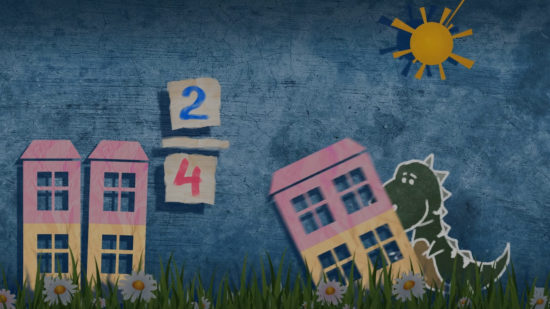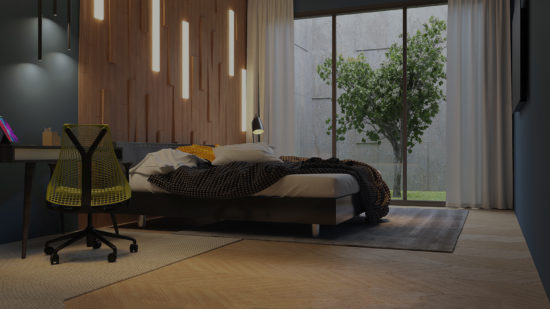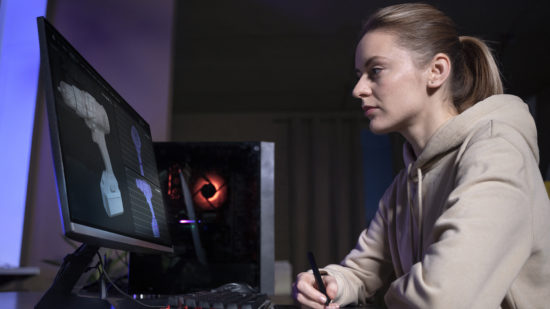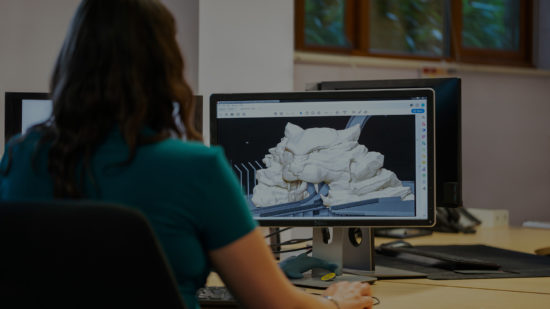Making 3D animations may open new doors for your company by capturing consumers’ attention in ways that traditional advertising can’t. Entrepreneurs who want to make the most of 3D animation services must have a firm grasp of the ins and outs of the process. Product demos, immersive experiences, and brand awareness may all be enhanced by clear, high-quality animations. 3D animation services provide an adaptable medium for advertising, education, and amusement, beginning with concept art and ending with final rendering.
Hiring a professional animation team is the best way to make sure your ideas are brought to life and help your company achieve its objectives. Your brand may reach new heights with the help of 3D animations, giving it an edge in the online marketplace. Think about how your company’s presentations, ads, and interactions with customers may be revolutionized with the help of 3D animation services.
What Is 3D Animation and Why It Matters for Businesses
So, what is CGI animation? It’s a process that uses computer-generated imagery (CGI) to create three-dimensional moving images. Unlike traditional 2D animation, which relies on flat drawings, 3D animation builds models that can be rotated and viewed from any angle. The advantage of 3D animation lies in its realism and versatility, making it valuable for various business applications.
Businesses use 3D animation services to create engaging advertisements, product demos, and training materials. For instance, a company can showcase a new product in detail, highlighting features through interactive animations. This method captures customer attention more effectively than static images or text descriptions.
Additionally, 3D animations can improve internal training programs by providing realistic simulations. For example, a manufacturing company might use 3D animations to train employees on complex machinery, reducing the risk of errors and increasing productivity.
Integrating 2D and 3D animation services into marketing and training strategies enhances communication, boosts engagement, and provides a competitive edge. Companies across industries, from automotive to healthcare, benefit from these technologies by delivering clearer, more impactful messages to their audiences.
How to Create a 3D Animation with the Right Workflow
Beginning with brainstorming and storyboarding, the process of creating 3D animation progresses via modeling, texturing, rigging, animation, rendering, and post-production. Each phase is carried out effectively in a well-structured workflow, which satisfies corporate goals with a high-quality end output.
1. Pre-Production: Storyboarding and Planning for Business Projects
Pre-production is a critical phase in 3D animation, during which detailed planning and storyboarding occur. It begins with defining the project’s goals and target audience. For business projects, this might include outlining the key messages or features to highlight.
Storyboarding involves sketching out the animation sequence, scene by scene. This step ensures that everyone involved in the project clearly understands the storyline and visual flow. Detailed storyboards help identify potential issues early, saving time and resources in later stages.
For example, in an advertising campaign, storyboarding can reveal whether the animation effectively communicates the product’s benefits. Businesses should also plan for the specific twelve animation styles you should know about, choosing those that best fit their brand identity and message. Collaborating closely with the animation team during this phase ensures that the final product aligns with business objectives and resonates with the target audience.
2. Modeling: Creating 3D Models for Commercial Purposes
Modeling is the process of creating three-dimensional objects that will be animated. This often involves creating detailed and accurate representations of products or characters for commercial purposes.
In the gaming industry, 3D modeling for games requires a high level of detail and realism to enhance the gaming experience. Models need to be meticulously crafted to ensure they look and perform well within the game environment. Similarly, for businesses, models used in advertisements or training materials must be precise and visually appealing to effectively convey the intended message.
Businesses often collaborate with professional 3D modelers who create these models using software like Blender, Maya, or 3ds Max. The collaboration ensures that the models meet specific requirements and integrate seamlessly into the animation. Real-world examples include automotive companies using 3D models to showcase new vehicle designs or healthcare providers using them to illustrate medical procedures. The quality and accuracy of 3D models play a crucial role in the success of the final animation.
3. Texturing and Shading: Enhancing Visual Appeal and Brand Consistency
Texturing and shading are crucial for adding depth and realism to 3D models. Texturing involves applying images or patterns to a 3D model’s surface to give it color and detail. Shading determines how light interacts with the model, creating shadows and highlights that enhance visual appeal.
Consistent texturing and shading can reinforce brand identity for businesses. For example, a company can use its specific color palette and textures to ensure that all 3D animations align with its branding. High-quality textures make products appear more realistic, essential for marketing and training materials.
An example can be seen in the automotive industry, where car manufacturers use texturing to showcase different paint finishes and interior materials. This attention to detail helps potential customers visualize the product more accurately, leading to better engagement and higher sales.
4. Rigging: Preparing Models for Business Animations
Rigging is creating a skeleton for a 3D model to move realistically. It involves building bones and joints that animators can manipulate to achieve lifelike movements. Rigging is essential for any business animation that requires dynamic actions or character interactions.
Well-rigged models ensure smooth and believable animations for businesses. This is particularly important in sectors like healthcare, where accurate simulations of human movement can enhance training programs. A medical company using rigged models to demonstrate surgical procedures would provide a clear and detailed view of each step.
Collaborating with experienced riggers ensures that the models are optimized for animation. This collaboration allows for more complex and engaging animations, enhancing the overall quality of the project. Proper rigging is a foundational step that directly impacts the effectiveness and professionalism of the final animation.
5. Animation: Bringing Business Concepts to Life
Animation is creating movement within 3D models, bringing concepts and ideas to life. It involves setting keyframes and using software tools to generate fluid transitions between movements. Animation breathes life into static models, making them dynamic and engaging.
For businesses, animations can effectively convey complex information and captivate audiences. An e-commerce company, for example, uses animations to show how a product works, making it easier for customers to understand its features. In corporate training, animated scenarios can simulate real-life situations, improving learning outcomes.
Working with professional animators ensures smooth and realistic movements. Their expertise allows for the creation of compelling animations that align with business goals. Effective animation can transform presentations, advertisements, and training materials, making them more impactful and memorable.
Advanced Techniques in 3D Animation to Consider for Your Next Project
Advanced techniques like dynamics, simulations, and sophisticated lighting and rendering can significantly enhance the quality and impact of your 3D animation projects. Utilizing these techniques ensures your animations stand out and effectively convey your business message.
Dynamics and Simulations for Business Solutions
Dynamics and simulations add a layer of realism to 3D animations by mimicking natural behaviors. Dynamics involve simulating physical properties like gravity, wind, and collisions, which are essential for creating lifelike animations. Simulations can replicate complex phenomena such as fluid dynamics, fire, smoke, and cloth movement.
Businesses can use these techniques to enhance their animations. For instance, a real estate company might use simulations to showcase how natural light fills a room throughout the day, making virtual tours more immersive. Dynamics can also improve product demonstrations, such as showing how a car’s suspension responds to different terrains.
Working with skilled animators ensures accurate and realistic simulations. This attention to detail enhances the overall quality of the animation, making it more engaging and believable for the audience. Utilizing dynamics and simulations in your projects can elevate the viewer’s experience and provide a competitive edge.
Lighting and Rendering Techniques for High-Quality Animations
Lighting and rendering are crucial for achieving photorealistic animations. Proper lighting enhances the mood and depth of a scene, while rendering converts the 3D models and animations into the final high-quality images and videos.
For businesses, effective lighting techniques can highlight key features of a product or space. If you are interested in how to make a virtual tour for real estate, using advanced lighting techniques in real estate in virtual tours can create a warm and inviting atmosphere, making properties more appealing to potential buyers. Rendered animations can also showcase products in various environments and lighting conditions, providing a comprehensive view to the audience.
Expert animators use software like V-Ray or Arnold to achieve high-quality lighting and rendering. They ensure that shadows, reflections, and textures are accurately represented, adding to the animation’s realism. High-quality lighting and rendering can significantly enhance the visual impact of your business animations, making them more attractive and effective.
Post-Production: Editing and Compositing for Professional Outputs
Post-production is the final phase, where raw animations are polished and refined. Editing involves cutting and arranging animation sequences to ensure a coherent and engaging flow. Compositing combines different elements, such as backgrounds, characters, and effects, into a seamless scene.
For businesses, professional post-production ensures that the final animation is polished and impactful. An example is creating a virtual tour for real estate, where post-production can enhance visual quality and coherence. Editing might involve adding voice overs, background music, or text overlays to provide additional information and context.
Compositing ensures that all elements blend smoothly, creating a professional look. This step can include adding special effects or correcting colors to match the brand’s visual identity. Collaborating with experienced post-production teams guarantees a high-quality output that effectively conveys the intended message.
Consider the following steps to enhance your 3D animation projects:
- Concept development. Clearly define the animation’s purpose and goals.
- Detailed storyboarding. Plan each scene to ensure a cohesive narrative.
- Professional rigging. Prepare models for realistic movement.
- Advanced texturing. Enhance visual appeal and consistency.
- Expert lighting. Use techniques that highlight key features.
- Thorough post-production. Edit and composite for a polished final output.
Professional post-production transforms raw animations into polished, professional content that enhances your brand’s image and communication.
How to Make 3D Animations that Work — Tools to Choose
Selecting the right tools is crucial for creating effective 3D animations. Here’s a guide to popular software and choosing the best one for your business needs. Leveraging the right tools can significantly enhance your workflow, improve the final output, and streamline production processes.
Popular 3D Animation Software for Commercial Use
Several 3D animation software options are available, each with unique features catering to different business requirements. Here are some popular choices:
- Blender. This open-source software is known for its versatility and comprehensive toolset, making it ideal for various animation projects, including films, visual effects, and video games. Its robust community support and regular updates make it a powerful tool for animators.
- Autodesk Maya. Widely used in the film and television industry, Maya offers advanced features for modeling, texturing, rigging, and animation. Its powerful simulation tools and integration with other Autodesk products make it a preferred choice for high-end animations.
- Cinema 4D. Known for its user-friendly interface, Cinema 4D is popular among motion graphics artists. It offers excellent tools for 3D modeling, animation, and rendering, and its integration with Adobe After Effects is a significant advantage for video production workflows.
- 3ds Max. Another Autodesk product, 3ds Max, is favored in the gaming industry for its robust modeling and rendering capabilities. It is particularly strong in creating complex 3D environments and character animations.
- Houdini. This software is renowned for its procedural generation capabilities, making it ideal for creating complex simulations and visual effects. It’s widely used in the VFX industry for films and commercials.
Choosing the right software depends on your specific needs and the complexity of your projects. Each of these tools offers unique advantages that can help bring your 3D animations to life effectively.
Choosing the Right Software for Your Business Needs
Selecting the appropriate 3D animation software for your business involves evaluating several factors. Here are some key considerations to help you make an informed decision:
- Project requirements. Identify the specific needs of your animation projects. For instance, if you need to create detailed character animations, Autodesk Maya or Blender might be suitable due to their advanced rigging and animation tools.
- Budget. Consider your budget constraints. Blender, being open-source, offers a cost-effective solution without compromising on features. On the other hand, premium software like Autodesk Maya and Cinema 4D may provide more advanced tools but come at a higher price.
- Ease of use. Evaluate the learning curve associated with each software. Cinema 4D is known for its user-friendly interface, making it a good choice for businesses with teams that may not have extensive animation experience.
- Integration. Consider how well the software integrates with other tools in your workflow. For instance, if you use Adobe After Effects for post-production, Cinema 4D’s integration can streamline your process.
- Support and community. Look at the support options and community resources available. Software like Blender has a large, active community and plenty of tutorials, which can be beneficial for troubleshooting and learning new techniques.
Points to summarize:
- Project requirements. Identify what specific features you need.
- Budget. Assess how much you can spend on software.
- Ease of use. Consider the software’s learning curve.
- Integration. Check compatibility with other tools.
- Support and community. Look for available resources and support.
Choosing the right software ensures your 3D animation projects meet business objectives effectively and efficiently.
Let 3D-Ace craft unique 3D animations for any use case Contact us!
Case Studies and Real-World Applications
In the film, television, and gaming industries, 3D animation enables the creation of visually stunning and immersive experiences that were previously impossible. Films like Avatar and Toy Story have set benchmarks for integrating 3D animation with live-action, leading to unprecedented box office success. The use of advanced software such as Unreal Engine allows filmmakers to create detailed virtual environments and characters, significantly reducing production costs and time while maintaining high-quality output.
3D Animation in Film and Television: Business Perspectives
3D animation has revolutionized the film and television industry, offering unparalleled visual effects and storytelling capabilities. For instance, The Lion King (2019) utilized 3D animation to create lifelike animal characters, generating over $1.6bn in revenue. Unreal Engine has been a critical player in this transformation, enabling real-time updates and photorealistic sets for productions like The Mandalorian, significantly saving time and costs using virtual sets.
3D Animation in Video Games: Commercial Advantages
The video game industry heavily relies on 3D animation to create immersive experiences. Games like Fortnite and Cyberpunk 2077 use advanced 3D modeling and animation techniques to enhance gameplay realism and visual appeal. The integration of 3D animation not only boosts player engagement but also drives substantial revenue. For example, Fortnite generated over $5.5bn in 2023 alone, showcasing the significant commercial impact of high-quality 3D animations in gaming.
3D Animation in Advertising and Marketing: Boosting Brand Engagement
3D animation in advertising and marketing provides dynamic and engaging content that captures consumer attention. Companies like Coca-Cola and Nike have used 3D animations in their campaigns to demonstrate product features vividly and creatively. For example, Nike’s animated commercials showcasing new footwear designs have significantly increased customer engagement and sales. Utilizing 3D animations in marketing helps brands stand out and effectively convey their messages, leading to higher conversion rates.
How Long Does It Take to Make a 3D Animation?
Depending on the project’s complexity, creating a 3D animation can take anywhere from a few weeks to several years. Short commercials might be completed in 3 weeks to 3 months. These projects often involve fewer scenes and more straightforward animation. Due to their intricate details and high-quality demands, full-length allows quicker turnaround times. In contrast, animated episodes take 3 to 6 months per episode. This timeline accounts for developing more detailed storylines, characters, and settings.
For full-length feature films, the production time extends significantly, often requiring 2 to 4 years. These projects demand extensive planning, detailed world-building, and high-quality rendering, contributing to the extended timeline. For instance, a movie like Frozen required approximately three years of production due to its complex ice effects and detailed character animations. Similarly, Pixar’s Toy Story took about five years to complete, as it pioneered new animation techniques at the time.
Several factors influence the timeline for creating 3D animations. The number of scenes, the complexity of character movements, and the level of detail required all play crucial roles. Additionally, the animation pipeline involves several stages, including concept development, storyboarding, modeling, rigging, animation, texturing, lighting, rendering, and post-production. Each of these stages requires specific skills and time, contributing to the overall duration of the project.
How Much Does it Cost to Create 3D Animations?
The cost of creating 3D animations varies widely based on the project’s scope and quality requirements. Short, simple animations can start at around $5,000 to $10,000. These projects typically involve basic character models and straightforward scenes, which keep costs lower. As the complexity of the animation increases, so do the costs. So it’s always better to reach out to our team and ask any questions that are of interest to you because we believe that each project is unique.
On the other hand, high-end feature films can exceed $100m in production costs. These projects require extensive resources, including large teams of animators, sophisticated software, and robust hardware for rendering high-quality images. Additionally, feature films often involve complex scenes, detailed character animations, and high levels of realism, all contributing to the higher costs. For instance, movies like Avatar or Kung Fu Panda had substantial budgets due to their groundbreaking animation techniques and high production values.
Several factors influence the cost of creating 3D animations. The duration of the animation, the complexity of the scenes, and the level of detail required for characters and environments are significant determinants. Additionally, using advanced technologies, such as motion capture and sophisticated rendering techniques, can also impact the cost. Working with experienced animation studios or professionals further adds to the expenses, as their expertise ensures high-quality outputs.
Tips for Business Owners Investing in 3D Animation
Investing in 3D animation can elevate your brand and improve customer engagement. In order to achieve the best results, understand your goals, choose the animation studio, and ensure your project timeline and budget are realistic.
Building a Strong Animation Portfolio to Attract Clients
Showcase a diverse range of projects that highlight different styles and techniques. Include high-quality renders and videos to demonstrate your capabilities. Ensure that context is provided for each project, explaining the objectives, challenges, and solutions. This approach affects your technical skills, problem-solving abilities, and creativity. Keep your portfolio updated with your latest work to reflect your current skills and style, ensuring potential clients see your best.
Staying Updated with Industry Trends to Maintain Competitiveness
Follow industry news, attend webinars, and participate in conferences to stay informed about the latest technologies and techniques. Subscribe to industry publications and join professional networks to gain insights from peers and experts. Implementing new tools and methods in your projects can improve efficiency and quality, keeping you ahead of the competition. Staying current with trends ensures that your animations remain relevant and engaging to your target audience.
Networking and Finding Opportunities in the Animation Industry
Attend industry events, such as conferences, workshops, and festivals, to meet potential clients and collaborators. Join online forums and social media groups dedicated to 3D animation to connect with peers and share knowledge. Participate in collaborative projects and contribute to industry blogs to increase your visibility. Building a strong network helps you stay informed about job openings, project opportunities, and industry developments, enhancing your career growth and business prospects.
Create Astonishing 3D Animations with 3D-Ace
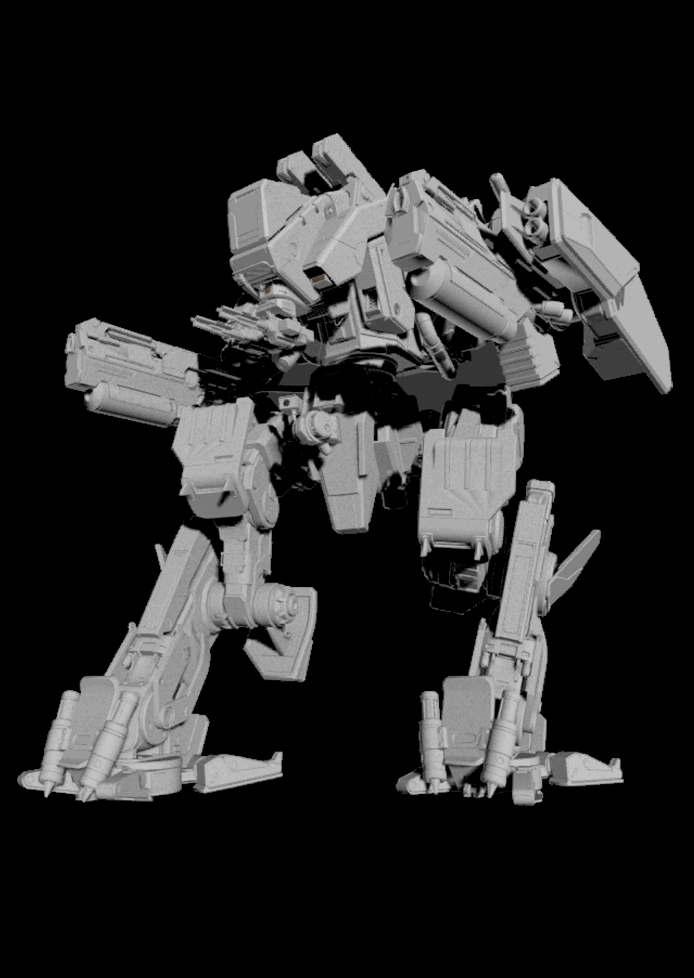
3D-Ace is an established art outsourcing studio that can greatly improve the efficiency and quality of your 3D animation projects if you decide to outsource them to them. To meet your individual requirements, our team of talented experts will create high-quality animations using state-of-the-art technology and creative approaches. As part of our partnership, we take care of the intricacies of 3D animation production so you can concentrate on running your business.
When you outsource to 3D-Ace, you gain access to a large pool of talented individuals that are experts in a wide range of animation techniques and programs. This ensures a polished end result that satisfies industry requirements while simultaneously saving time and costs. We are the perfect collaborator to realize your goals.
Are you ready to add professional-quality 3D animations to your projects? Please contact us to explore the possibility of working together and accomplishing remarkable outcomes.
